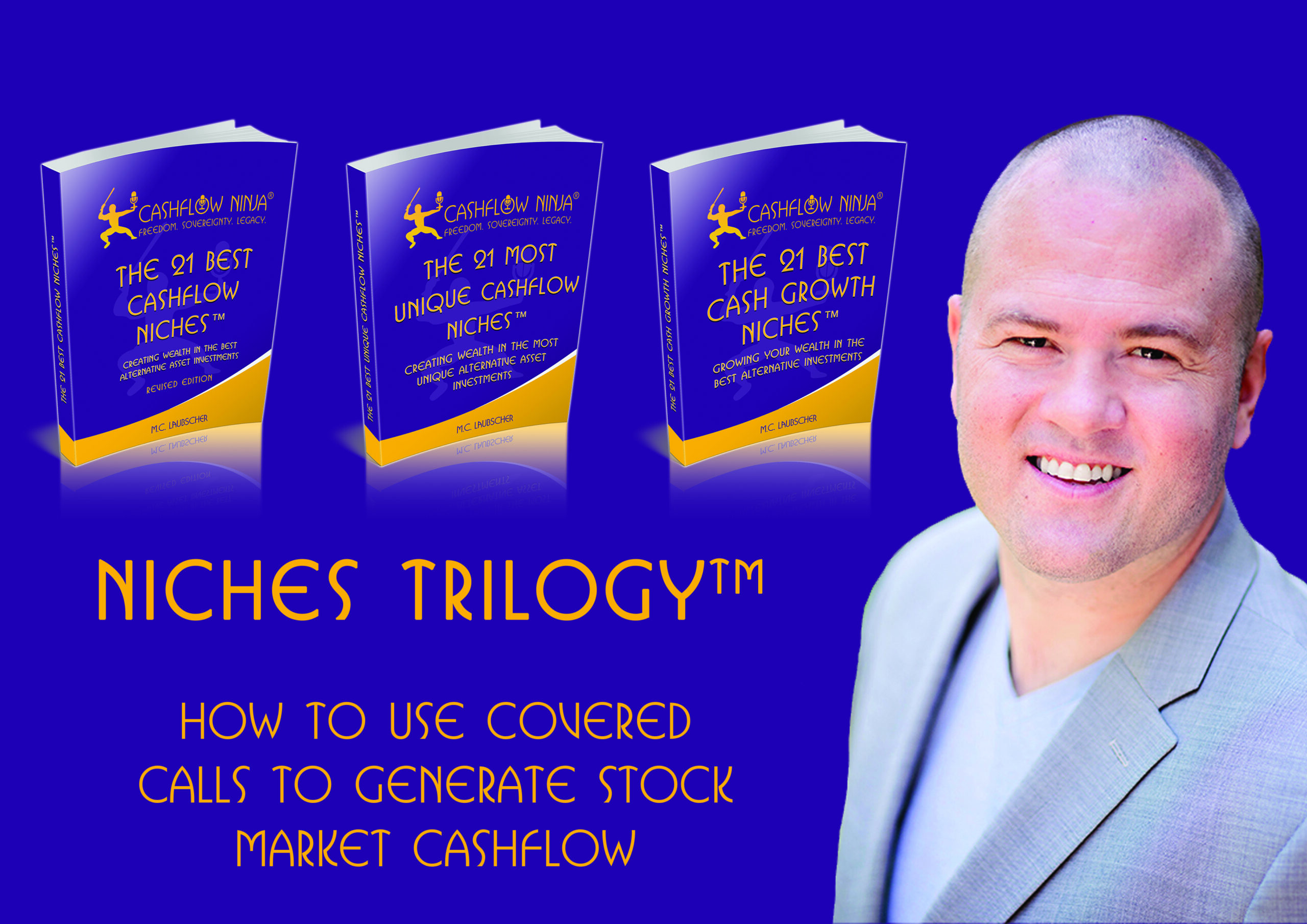
There is a unique strategy investors leverage to generate cashflow in financial markets known as a covered call.
A covered call involves selling call options on stocks you already own. It means giving someone the right, but not the obligation, to buy your stock at a predetermined price within a specific time frame. You must own 100 shares of stock for every call option you sell, hence the term “covered” call. When you sell the call option, you receive the “premium,” which you keep regardless of whether the option is exercised.
Why Do Investors Leverage Covered Calls?
One reason to use covered calls is to generate cash flow. Investors can earn extra income from stocks they believe will have minimal price movement in the short term.
Another advantage is partial downside protection. By receiving a premium, investors can offset potential losses if the stock price drops. However, it’s important to note that the protection is limited to the premium amount.
Additionally, covered calls allow investors to set a targeted selling price. If there’s a specific price at which they want to sell, writing a covered call at that strike price can be an effective way to exit the position.
Lastly, covered calls can enhance returns in a flat market. Covered calls can potentially increase overall returns if the market or a specific stock is moving sideways.
Using covered calls, investors can generate income, protect against downside risk, set targeted selling prices, and boost returns in a flat market.
How To Generate Income
When an investor executes a covered call trade, the investor sells the right to another investor to buy their shares of a specific stock they own for a predetermined price, called a strike price.
When an investor executes the covered call trade, there are three potential outcomes:
1. The stock price remains below the strike price: In this case, the call option expires worthless, and the investor keeps the premium and their stock.
2. The stock price is just above the strike price: It might get called away if it is slightly above the strike. The investor would be obligated to sell their stock at the strike price but keep the premium.
3. The stock price surges well above the strike price: If the stock is called, the investor still has to sell it at the strike price, missing out on potential gains above that level. The investor still gets to keep the premium.
Here’s an example to illustrate how it works:
Let’s say you own 100 shares of Company XYZ, currently trading at $50.
You decide to sell a covered call with a strike price of $55, expiring in a month, for a premium of $2.
Three things can happen:
Stock is below $55 at expiry: The option expires worthless. You keep your 100 shares and the $2 premium, making $200 (minus fees).
Stock is above $55 at expiry: The buyer exercises their right to buy your 100 shares at $55 each. You sell your shares for $5,500 but still keep the $200 premium.
If the stock surged to $60, you’d miss the extra gain from $55 to $60.
So, you can generate income by collecting premiums and selling your stocks at a profit.
How To Lose Money
When the value of a stock declines significantly, the losses incurred from selling the calls can outweigh the income received. This is especially important in a bear market where the decline in stock value can be substantial.
There is also an opportunity cost involved. If the stock price rises significantly above the strike price of the sold call, the investor may miss out on potential capital gains because they are obligated to sell the stock at the strike price if the option is exercised. This opportunity cost is a possible loss relative to the market’s performance.
Another risk is assignment risk. If the buyer exercises the call option before the expiration date, the investor must sell the shares at the strike price, which might be lower than the current market price. As a result, unrealized gains can be lost.
In cases where the stock pays a dividend, the early exercise of the call may occur if the dividend amount exceeds the remaining time value in the call’s premium. If an investor has sold an in-the-money call, they risk losing the dividend and the stock.
Transaction fees and commissions can also erode profits, mainly if an investor frequently writes covered calls. Although transaction fees have decreased over time, they can still impact profitability.
Tax implications are another consideration. The premium income received from writing covered calls may be subject to taxes at ordinary income rates. Additionally, any short-term capital gains from the stock sale (if the option is exercised) can be taxed at higher rates. These tax liabilities can reduce overall profitability.
If an investor sells a covered call during a market downturn and the market quickly recovers, the stock might be called away, resulting in a loss on the subsequent rise in stock value.
Choosing inappropriate strike prices or expiration dates can also lead to suboptimal outcomes. For example, the stock might be called away for less profit than possible, or the premiums might be too low to provide meaningful income or protection against a drop in stock price.
Lastly, misjudging volatility is a risk. Underestimating the stock’s price volatility can result in selling a call with a premium that doesn’t adequately compensate for the risk of the stock being called away.
Positives & Negatives Of Stock Market Cashflow (Covered Calls)
Positives:
Income Generation: Selling covered calls allows you to earn additional income (in the form of premiums) on top of dividends and stock appreciation.
Downside Protection: The premium received from selling the call protects if the stock price declines. However, this protection is limited to the amount of the premium received.
Flexibility: You can choose the strike price and expiration date based on your outlook for the stock and your income goals.
Reduced Risk: Compared to other complex options strategies, covered calls are relatively straightforward and have defined risks since you already own the underlying stock.
Profit in Sideways Market: If the stock price remains stable, you can profit from the premium collected without selling your stock.
Negatives:
Limited Upside Potential: If the stock’s price increases significantly, you won’t enjoy those gains since you have to sell the stock at the strike price if the option is used.
Losses Can Be More Than Premiums: While the premium protects you from some losses, if the stock’s price drops, you could lose way more than the premium you got from selling the call.
Taxes: Depending on how long you’ve had the stock, you might have to pay taxes on the profit if it gets sold because of the option.
Potential Stock Sale: If the stock’s price is higher than the strike price when the option expires and it gets used, you’ll have to sell the stock. You might want something else, especially if you plan to hold onto it long.
Costs and Fees: When you trade options, there might be fees charged by your broker. These fees can eat into the profits you make from the premiums.
Keep an Eye On It: Covered calls are simple, but you need to regularly check on them and figure out what to do if the option needs to be changed or if you need to take action.
Emotional Factors: If a stock’s price goes way beyond your strike price, you might feel regretful or miss out on making even more money.
Investment Opportunity Filter™
The Investment Opportunity Filter™ evaluates an investment opportunity based on cashflow, tax benefits, appreciation, and the leverage it provides.
Stock Market Cashflow (Covered Calls) scores a 3/4 with The Investment Opportunity Filter™.
Stock Market Cashflow (Covered Calls) can produce excellent cash flow, have limited tax benefits, and increase the value of your initial investment by appreciation the underlying stocks. It also allows for leveraging of trading platforms and tools.
Share This
Related

895: Josh McCallen: Why Airbnb Gurus Are Shifting To Boutique Hotels
My guest in this episode is Josh McCallen. Josh is a nationally recognized hospitality executive, conference speaker, innovator, builder & investor with a track record for developing exceptional resort properties and growing world-class operational teams. Josh is also one of the principals of Accountable Equity, an investment firm that specializes in historic resort communities and…

894: Michael Mathe: Private Lending In The Luxury Real Estate Market
My guest in this interview is Michael Mathe. Michael is an investor and entrepreneur. Michael’s businesses Little Pink Houses Of America and VIP Financial Education, provide amazing business opportunities and financial education. Links: Prefer Access Website: https://www.preferaccess.com/ preferninja@vipfinancialeducation.com Subscribe To Our Weekly Newsletter: The Wealth Dojo: https://subscribe.wealthdojo.ai/ Download all the Niches Trilogy Books: The 21…

893: Josh Clayton, Kirk Martin, Alec Roth: How To Invest In Movies
My guests in this episode are Josh Clayton, Kirk Martin, and Alec Roth from Firebrand Media Group. In this episode, they share how to invest in movies. Interview Links: Firebrand Media Group https://www.fmgfilms.com/ Billy Night Subscribe To Our Weekly Newsletter: The Wealth Dojo: https://subscribe.wealthdojo.ai/ Download all the Niches Trilogy Books: The 21 Best Cashflow Niches Digital:…
